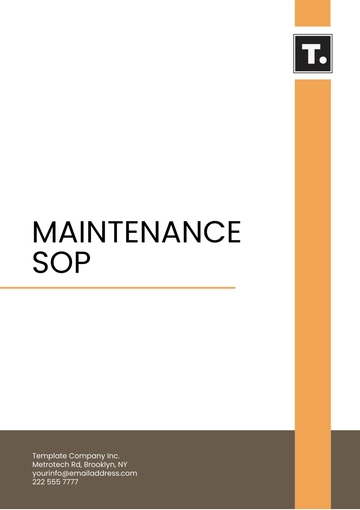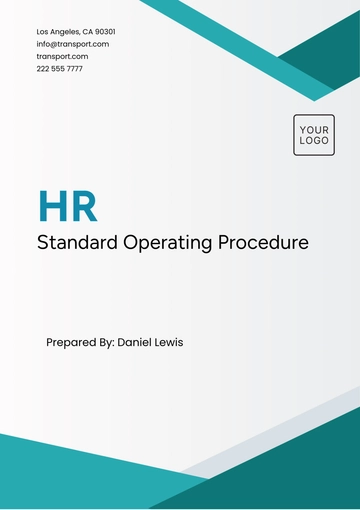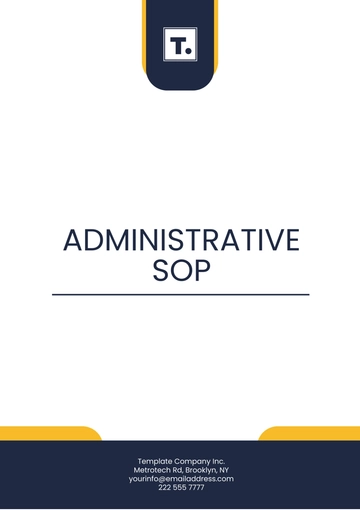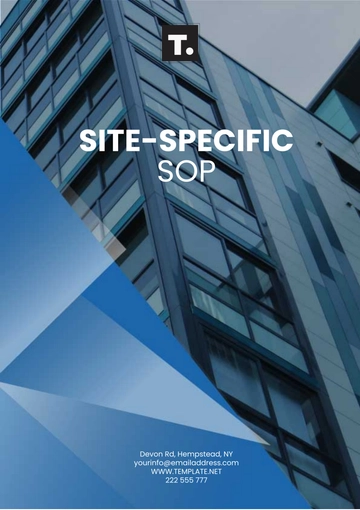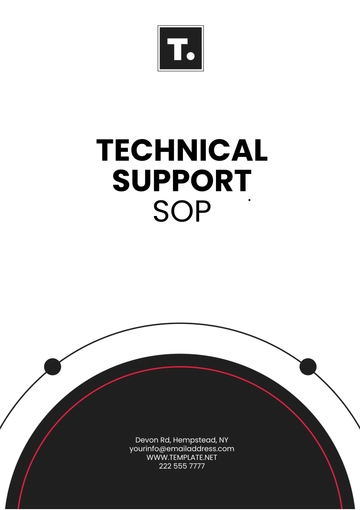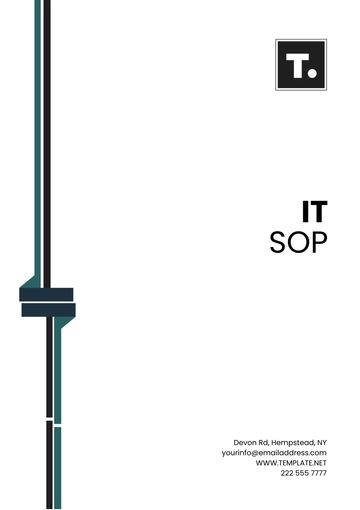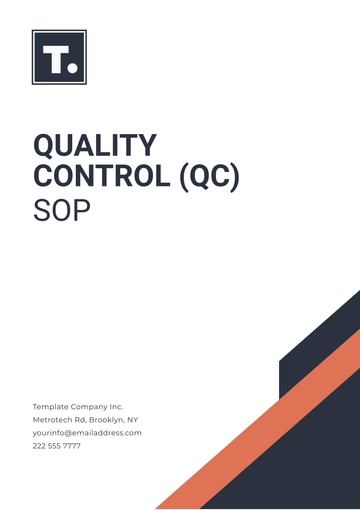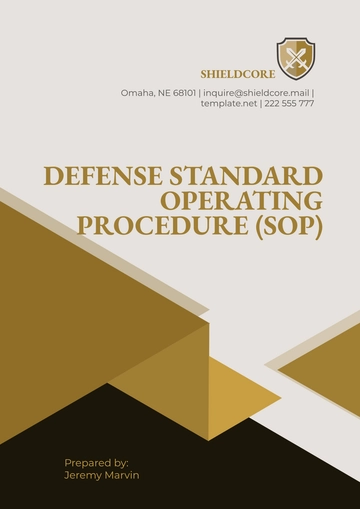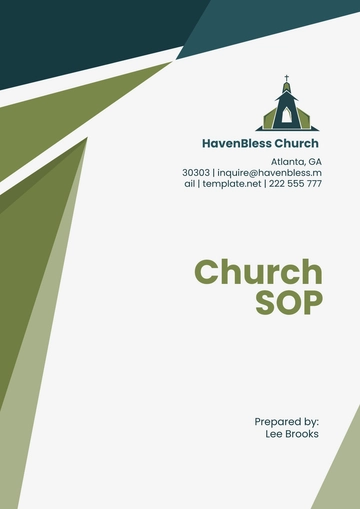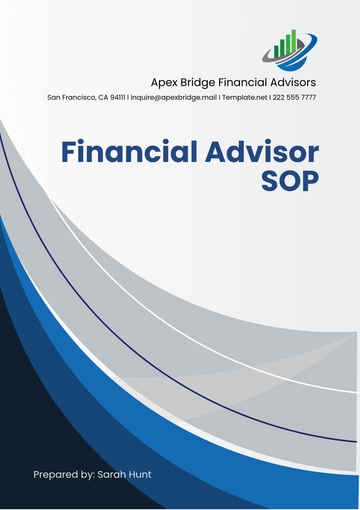Free Finance Credit SOP
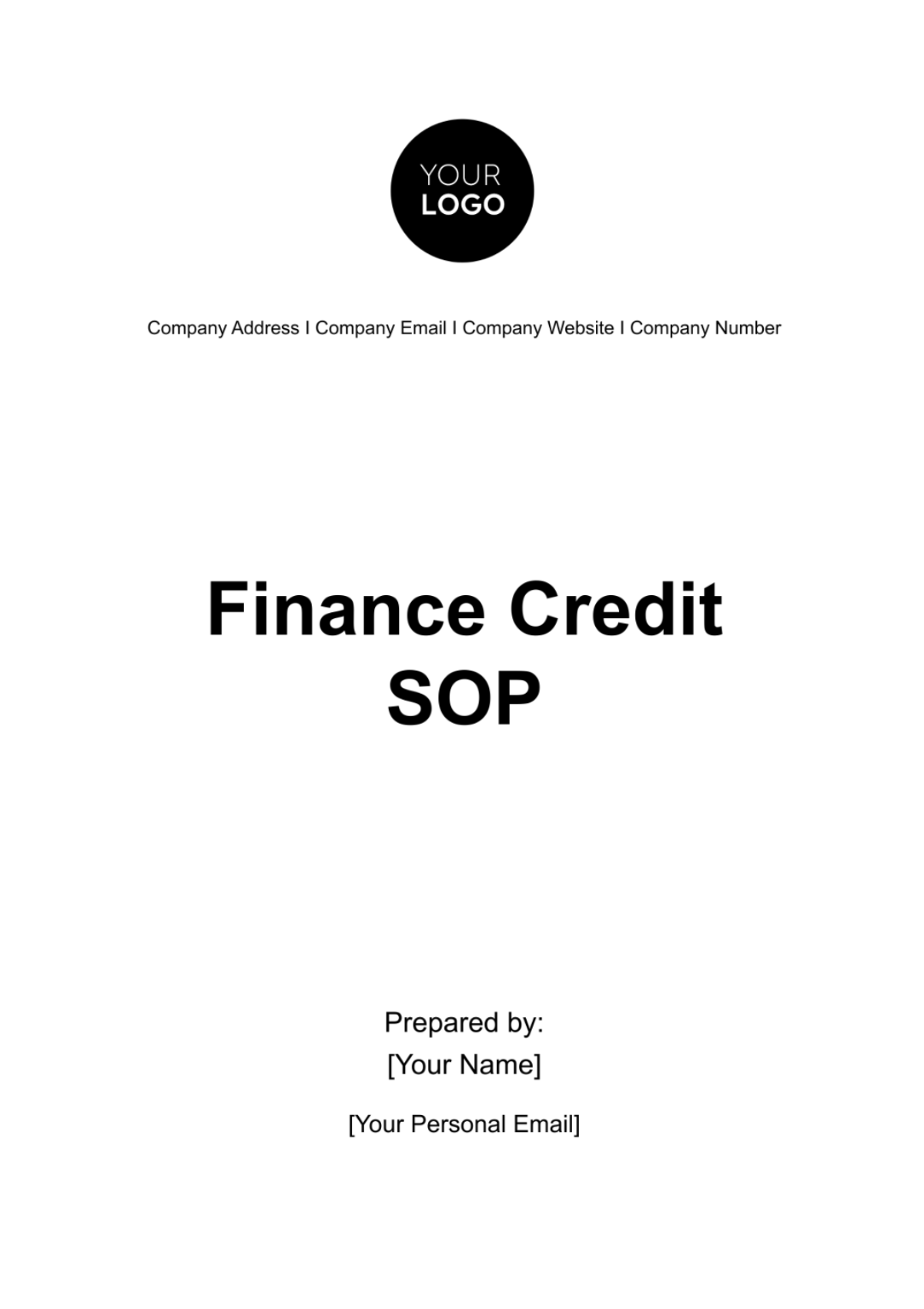
Introduction
A. Purpose
The purpose of this Finance Credit Standard Operating Procedure (SOP) is to establish a robust framework for credit management within [Your Company Name]. This SOP aims to ensure the financial stability of the organization by outlining standardized procedures for assessing, approving, monitoring, and mitigating credit risk.
B. Scope
This SOP applies to all credit-related activities within [Your Company Name], including but not limited to credit assessment, credit approval, ongoing credit monitoring, credit limit determination, and credit mitigation strategies. The scope extends across all departments involved in the credit management process to guarantee a cohesive and unified approach.
C. Objectives
The key objectives of this SOP are as follows:
Ensure Consistency: Standardize the credit management process to maintain consistency and fairness in decision-making.
Mitigate Credit Risk: Implement measures to identify, assess, and mitigate credit risk effectively.
Enhance Financial Health: Contribute to the overall financial health of [Your Company Name] by minimizing bad debt and optimizing credit terms.
Roles and Responsibilities
A. Credit Department
The Credit Department within [Your Company Name] plays a pivotal role in the credit management process. The department is responsible for:
Conducting thorough credit assessments of potential customers.
Setting appropriate credit limits based on assessed risk.
Implementing proactive measures for credit monitoring.
Developing and executing credit mitigation strategies when necessary.
B. [Your Name], Credit Manager
As the Credit Manager, [Your Name] is responsible for overseeing the entire credit management process. Key responsibilities include:
Leading the Credit Department in making informed credit decisions.
Collaborating with the Credit Committee in the approval process.
Analyzing credit reports and financial data to make strategic credit-related recommendations.
Ensuring compliance with relevant laws and regulations.
C. Credit Committee
The Credit Committee consists of [Your Name],other key stakeholders, and additional members as needed. The committee is responsible for:
Reviewing and approving credit applications.
Setting policies and guidelines for credit approval.
Escalating credit issues to the executive level when necessary.
D. Sales Department
The Sales Department collaborates with the Credit Department by:
Communicating customer credit needs to the Credit Department.
Coordinating with the Credit Department to ensure timely and accurate credit limit information is shared with customers.
E. Finance Department
The Finance Department supports the credit management process by:
Providing necessary financial data for credit assessments.
Collaborating with the Credit Department to optimize credit terms and limits.
Credit Assessment
A. Customer Onboarding
Application Process
Customers interested in establishing credit with [Your Company Name] must complete a comprehensive credit application form. This form includes:
Business details: Legal entity name, registration information, and ownership details.
Financial statements: Submission of recent balance sheets, income statements, and cash flow statements.
Trade references: Information on previous credit relationships, including references from suppliers or financial institutions.
Financial Analysis
The Credit Department undertakes a meticulous financial analysis, leveraging [Your Company]'s financial tools. Key aspects of the analysis include:
Liquidity ratios: Assessing the company's ability to meet short-term obligations.
Debt ratios: Evaluating the proportion of debt to equity to gauge financial leverage.
Profitability: Analyzing net profit margins and return on equity to understand overall financial health.
B. Credit Scoring
Score Calculation
A standardized credit scoring model is employed to objectively evaluate creditworthiness. This model considers multiple factors, assigning weights based on their importance. Factors include:
Payment history: Timely payments positively influence the credit score.
Financial ratios: Liquidity, solvency, and profitability ratios contribute to the overall assessment.
Industry benchmarks: Comparison of financial metrics against industry standards.
Score Interpretation
The Credit Department establishes clear score thresholds to guide decision-making. For instance:
Score range 0-50: High-risk category, requiring additional scrutiny and possible collateral.
Score range 51-75: Medium risk, standard credit terms apply.
Score range 76-100: Low risk, liberal credit terms may be extended.
Credit Approval
A. Approval Process
Credit Committee
The Credit Committee, consisting of [Your Name], other key stakeholders, and additional members as needed, convenes regularly to review and approve credit applications. The process involves:
Reviewing the credit application, financial analysis, and credit score.
Assessing any additional information or recommendations provided by the Credit Manager.
Making informed decisions on credit approvals or rejections.
Decision Criteria
The Credit Committee uses predefined decision criteria, including:
Credit score thresholds.
Financial analysis results.
Adherence to established credit policies and guidelines.
B. Credit Limits
Determination
Credit limits are determined based on the customer's creditworthiness and the assessed risk. Factors influencing credit limit determination include:
Order history: Evaluating past purchasing behavior.
Payment patterns: Analyzing historical payment records.
Market conditions: Considering external factors impacting the customer's industry.
Communication
Once credit limits are established, clear communication channels are maintained with the Sales Department and the customer. Sales teams are promptly informed of approved credit limits, ensuring seamless transactions. Customers receive formal communication outlining their credit terms and limits.
Credit Monitoring
A. Ongoing Review
Periodic Assessment
To maintain a proactive approach to credit risk, the Credit Department conducts periodic reviews of customer credit profiles. These reviews are scheduled at regular intervals and involve:
Analyzing the customer's financial statements to identify any emerging trends or shifts in financial stability.
Evaluating payment patterns and addressing any deviations from the agreed-upon terms.
Verifying the customer's ongoing adherence to credit limits and terms.
Early Warning System
An early warning system is implemented to promptly identify potential credit issues. This system is designed to:
Monitor key financial indicators, triggering alerts if predefined thresholds are breached.
Flag customers exhibiting changes in purchasing behavior or payment patterns.
Facilitate swift intervention by the Credit Department to address emerging credit risks.
Credit Mitigation
A. Collection Strategies
Reminder System
To ensure timely payments, a systematic reminder system is established for overdue accounts. The system includes:
Automated notifications sent to customers as payment due dates approach.
Clear communication of outstanding invoices and associated consequences of delayed payments.
Graduated reminders escalating in urgency for persistent late payments.
Negotiation
In cases of financial hardship or unexpected challenges faced by customers, a negotiation process is initiated. This involves:
Open communication with the customer to understand the reasons for payment delays.
Collaborative efforts to devise alternative payment arrangements, considering the customer's financial capacity.
Documentation of any revised payment terms in a formal agreement signed by both parties.
B. Legal Action
Criteria for Legal Action
Clearly defined criteria guide the decision to initiate legal action in instances of persistent default. These criteria include:
Exhaustion of internal collection efforts without resolution.
Non-compliance with agreed-upon alternative payment arrangements.
Adherence to all legal requirements and regulations governing debt collection in the relevant jurisdiction.
Legal Process
Upon meeting the criteria for legal action, the Credit Department collaborates with legal counsel to initiate legal proceedings. This involves:
Filing necessary legal documents to pursue debt recovery through the appropriate legal channels.
Ensuring compliance with all applicable laws and regulations during the legal process.
Communicating with the customer about the initiation of legal proceedings and providing opportunities for resolution before further legal actions are taken.
Documentation
A. Record Keeping
Comprehensive record-keeping is fundamental to the credit management process at [Your Company Name]. The Credit Department maintains detailed records of all credit-related activities, including:
Credit applications: Complete documentation of customer credit applications, including all submitted forms and supporting documents.
Financial analyses: Records of financial assessments, including liquidity ratios, debt ratios, and profitability analyses.
Approval decisions: Documentation of decisions made by the Credit Committee, including notes on discussions and reasons for approvals or rejections.
Communication records: A log of all communications with customers, including credit limit notifications, payment reminders, and negotiation agreements.
Periodic reviews: Records summarizing the findings of periodic credit reviews, outlining any changes in creditworthiness or risk status.
B. Reporting
Regular reporting is essential to monitor and communicate credit performance to senior management at [Your Company Name]. Reports include key metrics and insights such as:
Days Sales Outstanding (DSO): Calculated to assess the average number of days it takes to collect payment after a sale.
Bad Debt Ratios: Providing insight into the percentage of outstanding receivables that are unlikely to be collected.
Credit Risk Trends: Highlighting shifts in credit risk based on periodic assessments and early warning system alerts.
Collection Effectiveness: Measuring the efficiency of collection strategies and the success of negotiation efforts.
Legal Actions Status: Summarizing ongoing legal proceedings and outcomes.
Training and Continuous Improvement
A. Training Programs
To ensure the effectiveness of the credit management process, ongoing training programs are implemented for relevant staff. These programs cover:
Use of credit scoring models and financial analysis tools.
Decision-making criteria for the Credit Committee.
Effective communication skills for negotiation and collection efforts.
Legal and regulatory compliance in credit management.
B. Continuous Improvement
A culture of continuous improvement is fostered within the Credit Department. This involves:
Regular reviews of credit management procedures to identify areas for enhancement.
Collaboration with other departments, such as Sales and Finance, to gather insights and feedback.
Implementation of improvements based on lessons learned from credit-related challenges and successes.
C. Key Performance Indicators (KPIs)
Key Performance Indicators are established to measure the effectiveness of the credit management process. These KPIs include:
Percentage of timely payments versus overdue payments.
Reduction in DSO over specific periods.
Improvement in credit scoring accuracy and predictive capabilities.
Decrease in bad debt ratios over time.
Compliance and Legal Considerations
A. Regulatory Compliance
[Your Company Name] is committed to adhering to all relevant laws and regulations governing credit management. The Credit Department ensures compliance with:
Consumer Credit Protection Act: Protecting consumers in credit transactions.
Fair Credit Reporting Act: Regulating the collection and use of credit information.
Debt Collection Practices Act: Governing ethical debt collection practices.
Other industry-specific regulations: Ensuring compliance with any additional regulations applicable to [Your Company Name]'s operations.
B. Data Protection and Privacy
To safeguard customer information, the Credit Department follows stringent data protection and privacy measures, including:
Secure storage and transmission of sensitive customer data.
Compliance with data protection laws such as GDPR or HIPAA, depending on the jurisdiction and industry.
Regular training for staff on data security best practices.
C. Legal Review of Credit Agreements
Before finalizing credit agreements, the Legal Department reviews all terms and conditions to:
Ensure they comply with applicable laws and regulations.
Verify enforceability in the event of legal action.
Mitigate legal risks associated with the credit relationship.
Communication and Customer Relations
A. Transparent Communication
Transparent and open communication is paramount in maintaining positive customer relations. The Credit Department:
Clearly communicates credit terms, limits, and any changes to customers.
Provides timely responses to customer inquiries regarding credit-related matters.
Offers explanations for credit decisions and communicates the rationale behind any necessary credit limit adjustments.
B. Customer Education
Proactive customer education initiatives are implemented to:
Enhance customer understanding of credit terms and expectations.
Provide guidance on how customers can improve their creditworthiness.
Offer resources and support to help customers navigate credit-related challenges.
C. Customer Feedback Mechanism
To continuously improve customer relations, [Your Company Name] establishes a feedback mechanism that:
Solicits feedback on the credit application and approval process.
Gather insights on customer satisfaction with credit terms and communication.
Identifies areas for improvement and addresses customer concerns promptly.
D. Conflict Resolution
In the event of conflicts or disputes, the Credit Department follows a structured conflict resolution process that involves:
Open communication with the customer to understand the issue.
Collaboration with other relevant departments, such as Sales or Legal, to resolve disputes effectively.
Documentation of the resolution process for future reference.
- 100% Customizable, free editor
- Access 1 Million+ Templates, photo’s & graphics
- Download or share as a template
- Click and replace photos, graphics, text, backgrounds
- Resize, crop, AI write & more
- Access advanced editor
Efficiently standardize credit processes with the Finance Credit SOP Template on Template.net. This editable and customizable Standard Operating Procedure simplifies credit management. Tailor content effortlessly using our Ai Editor Tool, ensuring adaptability and precision. Elevate your financial protocols with this user-friendly template, offering a comprehensive approach to crafting personalized SOPs for informed decision-making and strategic financial planning.




